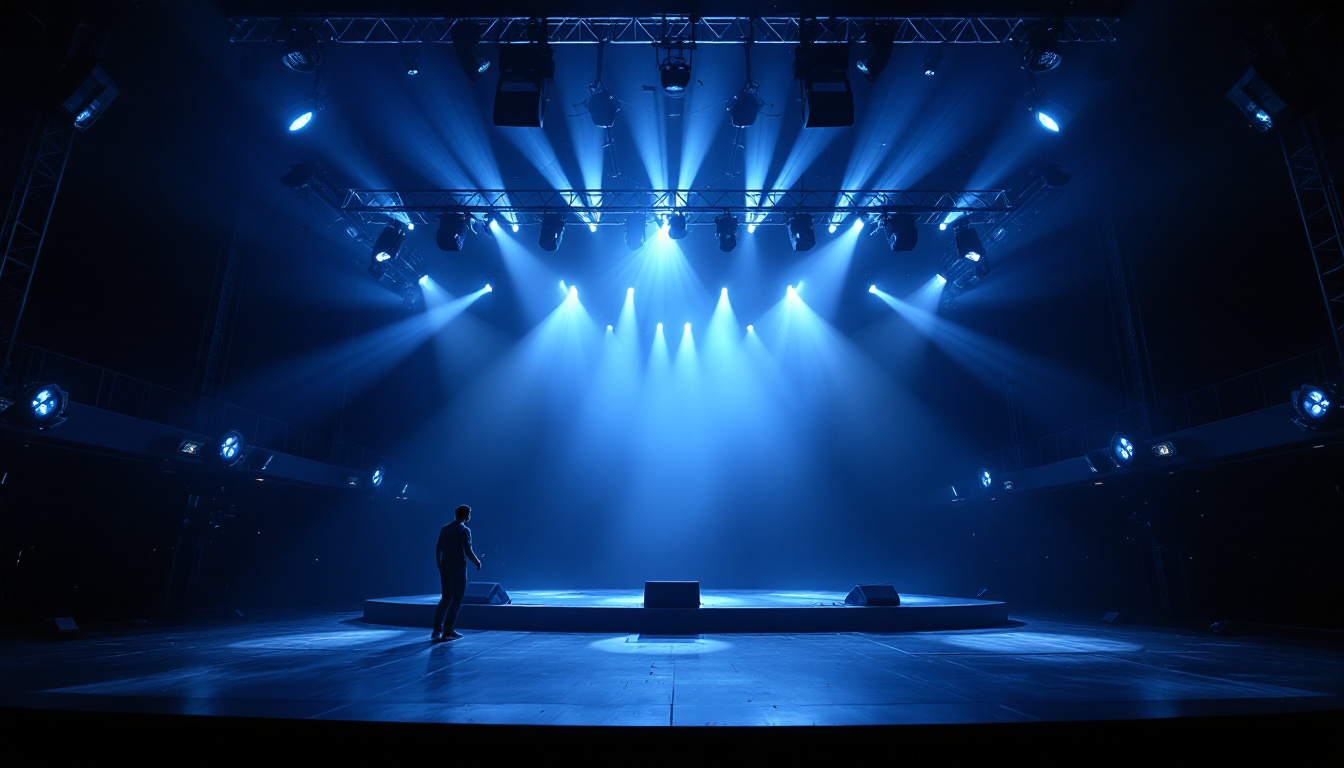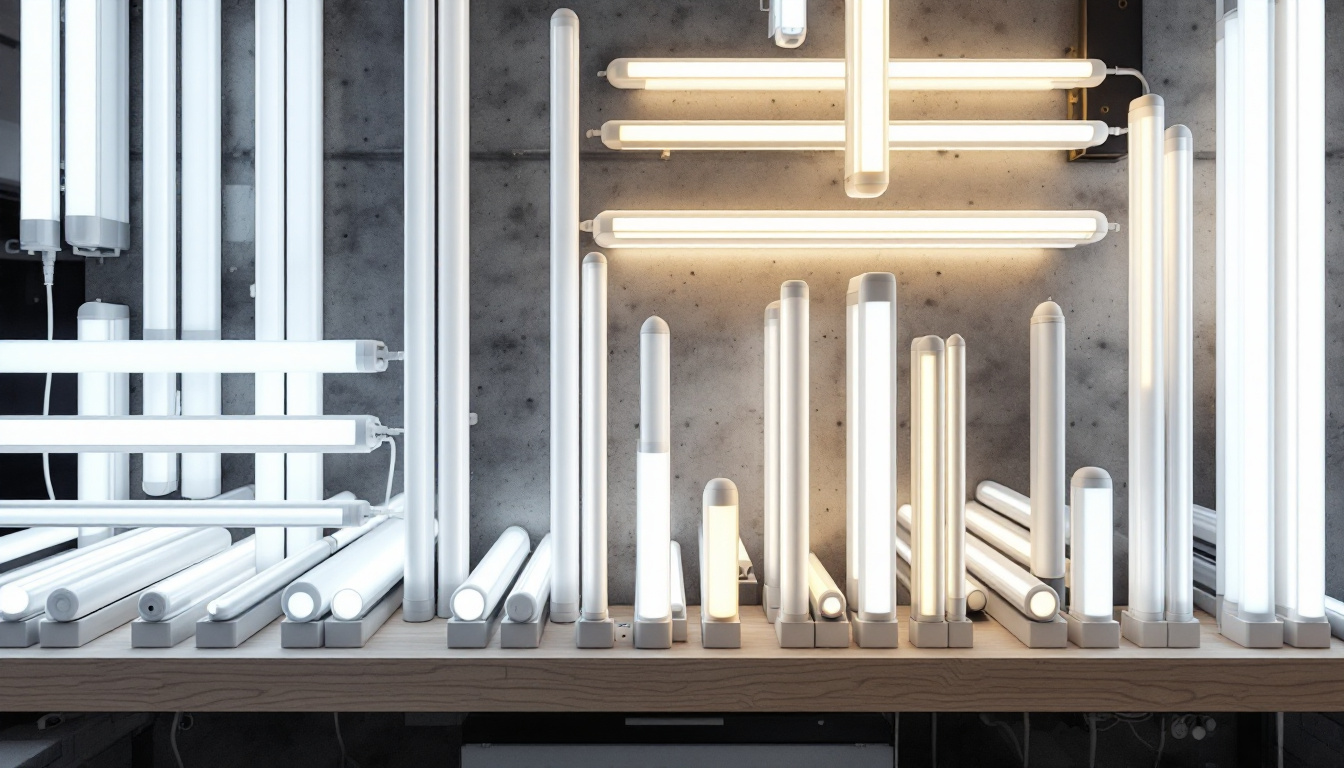
In recent years, the lighting industry has undergone significant transformations, primarily driven by advancements in technology and a growing emphasis on energy efficiency. One of the most notable changes is the shift from traditional T12 fluorescent tubes to LED lighting solutions. For lighting contractors, understanding the importance of this conversion is essential for staying competitive, meeting client demands, and embracing sustainability.
LED lighting has gained popularity for various reasons, making it a preferred choice for both commercial and residential applications. The benefits of LED technology extend beyond mere aesthetics, offering practical advantages that can significantly impact a contractor’s business.
One of the most compelling reasons to convert T12 fixtures to LED is energy efficiency. LED lights consume significantly less energy compared to traditional fluorescent options. This reduction in energy consumption translates to lower electricity bills for clients, making LED installations an attractive proposition. For contractors, promoting energy-efficient solutions can lead to increased customer satisfaction and repeat business.
Moreover, the energy efficiency of LED lighting contributes to a reduced carbon footprint, aligning with global efforts to combat climate change. As businesses and homeowners become more environmentally conscious, the demand for energy-efficient lighting solutions is expected to rise. Contractors who stay ahead of this trend not only enhance their marketability but also play a vital role in fostering a more sustainable future.
LED lights boast a much longer lifespan than T12 fluorescent tubes. While T12 bulbs may last around 7,000 to 15,000 hours, LEDs can last anywhere from 25,000 to 50,000 hours or more. This longevity means fewer replacements and less maintenance for clients, which is a strong selling point for contractors. By reducing the frequency of bulb changes, contractors can save their clients both time and money.
In addition to their extended lifespan, LEDs also maintain their brightness and color quality over time, unlike traditional bulbs that tend to dim as they age. This consistent performance ensures that spaces remain well-lit and visually appealing, which is particularly important in settings such as retail environments or hospitality venues where ambiance plays a crucial role. By highlighting these advantages, contractors can further emphasize the value of LED installations to prospective clients.
As environmental concerns continue to rise, many clients are seeking sustainable lighting solutions. LED lights are free from hazardous materials like mercury, which is commonly found in fluorescent tubes. By promoting LED conversions, contractors can position themselves as environmentally responsible professionals, appealing to a growing market segment that prioritizes sustainability.
Furthermore, the production and disposal of LED lights have a lower environmental impact compared to traditional lighting options. LEDs are often designed to be recyclable, reducing waste in landfills. This aspect not only enhances the appeal of LEDs to eco-conscious clients but also allows contractors to participate in a broader conversation about sustainability and responsible consumption. By integrating these points into their sales pitch, contractors can effectively communicate the long-term benefits of LED lighting, not just for their clients, but for the planet as a whole.
Converting T12 fixtures to LED is not merely a matter of swapping out bulbs; it involves a comprehensive understanding of the existing lighting system and the requirements of the new LED technology. Lighting contractors must navigate various considerations to ensure a successful transition.
The first step in the conversion process is to assess the existing T12 fixtures. Contractors should evaluate the condition of the fixtures, the type of ballast used, and the overall layout of the lighting system. Some T12 fixtures may require ballast replacement or removal to accommodate LED tubes, while others may be compatible with direct retrofitting. A thorough assessment will help contractors determine the best approach for each specific situation.
Choosing the right LED products is crucial for a successful conversion. Contractors must consider factors such as lumen output, color temperature, and beam angle to ensure that the new lighting meets the needs of the space. Additionally, understanding the differences between direct replacement LED tubes and those that require a new fixture will help contractors make informed decisions that align with their clients’ expectations.
Another essential aspect of the conversion process is ensuring compliance with local regulations and building codes. Many jurisdictions have specific requirements regarding energy efficiency and lighting standards. Contractors must stay informed about these regulations to avoid potential issues during installation and to ensure that their clients benefit from any available incentives for energy-efficient upgrades.
While the benefits of converting T12 to LED are clear, contractors must also consider the cost implications of such projects. Understanding the financial aspects can help contractors provide accurate estimates and justify the investment to clients.
The initial investment for LED conversion may be higher than simply replacing T12 tubes with new fluorescent ones. However, the long-term savings in energy costs and reduced maintenance expenses often outweigh the upfront costs. Contractors should be prepared to present a cost-benefit analysis to clients, highlighting the potential savings over time and the return on investment (ROI) associated with LED installations.
Many utility companies and government programs offer incentives and rebates for energy-efficient upgrades, including LED conversions. Contractors should stay informed about available programs in their area and communicate these opportunities to clients. By leveraging these incentives, contractors can help clients reduce the overall cost of the conversion, making it a more attractive option.
In some cases, clients may require financing options to manage the initial investment for LED conversions. Contractors can assist by providing information on financing solutions that may be available through local banks or energy service companies. Offering financing options can make the conversion more accessible to clients, ultimately increasing the likelihood of securing the project.
As the demand for LED lighting solutions continues to grow, lighting contractors must effectively market their LED conversion services. A strong marketing strategy can help contractors stand out in a competitive landscape and attract new clients.
Education is a powerful tool in marketing LED conversion services. Contractors should take the time to educate clients about the benefits of LED lighting, the conversion process, and the potential savings. This can be achieved through informational brochures, website content, and social media campaigns. By positioning themselves as knowledgeable experts, contractors can build trust and credibility with potential clients.
Highlighting successful LED conversion projects can serve as an effective marketing strategy. Contractors can create case studies or testimonials from satisfied clients to showcase the positive outcomes of their work. Before-and-after photos can also visually demonstrate the impact of the conversion, making it easier for potential clients to envision the benefits of LED lighting in their own spaces.
Building relationships with other professionals in the industry can lead to valuable referrals and partnerships. Contractors can connect with architects, interior designers, and facility managers to expand their network and increase their visibility. Collaborative efforts can result in joint marketing initiatives, allowing contractors to reach a broader audience and establish themselves as go-to experts for LED conversions.
While the benefits of converting T12 to LED are substantial, contractors may encounter challenges during the conversion process. Being aware of these challenges can help contractors prepare and navigate potential obstacles effectively.
Some clients may be hesitant to embrace new technology, particularly if they have been using T12 fixtures for many years. Contractors should be prepared to address client concerns and provide evidence of the benefits associated with LED lighting. Demonstrating the advantages through real-world examples and data can help alleviate fears and encourage clients to make the switch.
Not all T12 fixtures are suitable for LED conversion. Some may require extensive modifications or even complete replacement. Contractors must be knowledgeable about the technical limitations of existing fixtures and communicate these limitations transparently to clients. Providing alternative solutions, such as new LED fixtures, can help ensure that clients still achieve their desired lighting outcomes.
The lighting industry is continually evolving, with new LED technologies and products emerging regularly. Contractors must stay informed about the latest advancements to provide clients with the best options available. Attending industry conferences, participating in training programs, and subscribing to relevant publications can help contractors remain knowledgeable and competitive in the market.
The conversion from T12 to LED lighting is not just a trend; it is a significant shift that lighting contractors must embrace to remain relevant in the industry. The benefits of energy efficiency, longevity, and environmental sustainability make LED lighting an attractive option for clients. By understanding the conversion process, addressing cost considerations, and effectively marketing their services, contractors can position themselves as leaders in the lighting industry.
As the demand for energy-efficient solutions continues to grow, lighting contractors who prioritize LED conversions will be well-equipped to meet client needs and contribute to a more sustainable future. By staying informed, adapting to challenges, and leveraging the advantages of LED technology, contractors can thrive in an evolving market and ensure their long-term success.
Ready to lead the charge in energy-efficient lighting solutions? LumenWholesale is your trusted partner in the transition from T12 to LED. We provide lighting contractors with high-quality, specification-grade lighting products at unbeatable wholesale prices. Say goodbye to local distributor markups and hello to superior lighting products that meet the highest industry standards. With free shipping on bulk orders, you can stock up on premium lighting without any hidden fees. Make the smart choice for your business and your clients—choose LumenWholesale for quality, affordability, and convenience. Take the first step towards a brighter, more sustainable future by visiting Wholesale Lighting at the Best Value today.

Explore the crucial role of theater lighting in enhancing safety during installations.

Discover how lighting inverters are revolutionizing the lighting industry by enhancing energy efficiency, ensuring uninterrupted power supply, and reducing operational costs.

Discover the ultimate guide to fluorescent tube lengths with our essential checklist tailored for lighting professionals.

Discover innovative hacks for smart lighting contractors to optimize the use of 4-foot LED light fixtures.